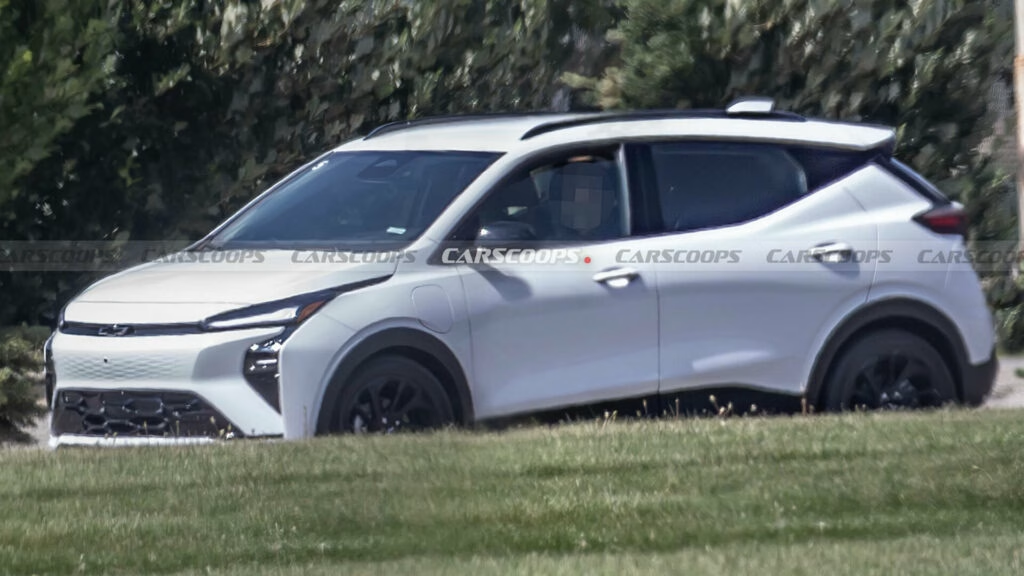What’s Actually New With the 2027 Chevrolet Bolt?
If you’ve seen the latest spy shots of the 2027 Chevrolet Bolt, you might be scratching your head. Didn’t Chevy just retire the Bolt? And isn’t this new model looking suspiciously familiar? Here’s the deal: after a brief hiatus, Chevrolet is bringing back the Bolt, but with a twist—it’s essentially a refreshed version of the Bolt EUV, not a ground-up redesign.
So, what’s changed? The most obvious updates are up front. The new Bolt sports a bolder, X-shaped accent on its fascia, swapping out the old horizontal grille lines for a honeycomb mesh that feels a bit more upscale. The lighting has been tweaked too, with a sleeker, less pronounced nose and a subtle bowtie logo. Around back, the taillights get a modern refresh, and the bumper is now classier, with more painted surfaces and slimmer reflectors. There’s also a hint of geometric patterning, adding a touch of flair you might not expect at this price point.
Is the 2027 Bolt Just a Facelifted EUV?
Let’s be honest: Chevy isn’t trying to hide the Bolt’s roots. Park the new Bolt next to a 2022 Bolt EUV, and you’ll spot the similarities right away. The profile, the liftgate, even the spoiler—they’re all familiar. But look closer and you’ll notice the details that set the 2027 model apart: new wheels, revised cladding, and those upgraded lights. It’s a classic case of “if it ain’t broke, don’t fix it”—but do give it a little polish.
Chevrolet’s strategy here is pretty clear. Rather than reinventing the wheel, they’re updating a proven platform to keep costs down and get an affordable EV back on the road quickly. For buyers, that means you’re getting a car with a track record—just with a fresher face.
What’s Under the Hood: Battery Tech and Charging
Here’s where things get interesting. The 2027 Bolt will use lithium iron phosphate (LFP) batteries, initially sourced from CATL. Why does that matter? LFP batteries are known for their durability and lower cost, though they typically offer slightly less range than nickel-based alternatives. For a budget-friendly EV, it’s a smart trade-off. According to industry analysts, LFP technology is rapidly gaining ground in the EV world, with BloombergNEF reporting that LFP batteries now power over 30% of new EVs globally as of 2023.
Chevy is also jumping on the North American Charging Standard (NACS) bandwagon, meaning the new Bolt will be compatible with Tesla Superchargers. That’s a big deal for real-world usability—no more hunting for rare CCS stations. For many drivers, this could be the difference between considering an EV and actually buying one.
How Does the New Bolt Compare to the Previous Model?
While Chevy hasn’t released full specs yet, it’s likely the 2027 Bolt will stick close to the outgoing EUV’s formula. The 2023 Bolt EUV featured a 65 kWh battery, a front-mounted motor with 200 horsepower, and an EPA-estimated range of 247 miles. That’s more than enough for most daily commutes and weekend getaways. If Chevy can maintain or even slightly improve those numbers—especially with the efficiency gains possible from LFP batteries—they’ll have a compelling package.
It’s worth noting that the Bolt will continue to ride on GM’s BEV2 platform. Some might see this as a downside, given the industry’s push toward newer architectures, but it also means proven reliability and lower development costs. For buyers focused on value, that’s not a bad thing.
Where Will the Bolt Fit in Chevy’s EV Lineup?
Chevrolet has made it clear: the Bolt will be their most affordable electric vehicle, slotting in below the Equinox EV, which starts at $33,600 before destination fees. That positions the Bolt as one of the most accessible EVs on the market—especially if it qualifies for federal and state incentives. For context, Kelley Blue Book reports that the average new EV transaction price in the US was over $53,000 in early 2024. The Bolt’s return could help close the affordability gap and bring more first-time EV buyers into the fold.
What’s the Real-World Impact for Drivers?
For many shoppers, the Bolt’s comeback is about more than just price. It’s about practicality. The combination of a familiar, easy-to-drive package, improved charging access, and lower running costs makes the Bolt a smart choice for city dwellers and suburbanites alike. Plus, with LFP batteries, owners can expect longer battery life and less degradation over time—a win for both wallets and peace of mind.
The big takeaway? The 2027 Chevrolet Bolt isn’t about perfection—it’s about smarter adjustments. Start with one change this week, and you’ll likely spot the difference by month’s end. Chevy’s bet is that a refreshed, affordable EV with real-world usability will be exactly what many drivers have been waiting for.

